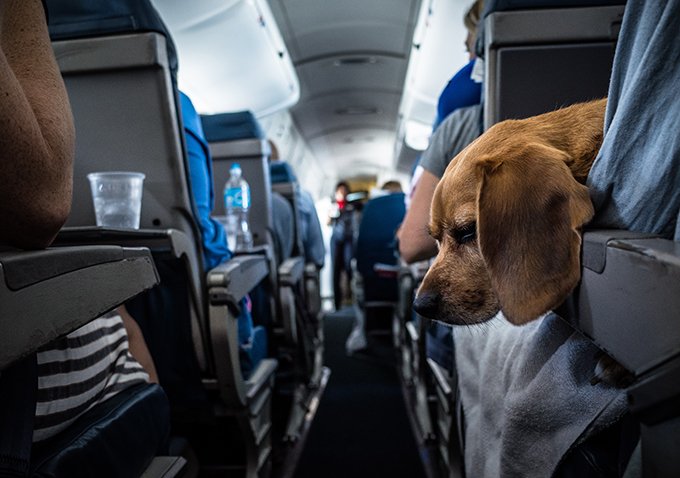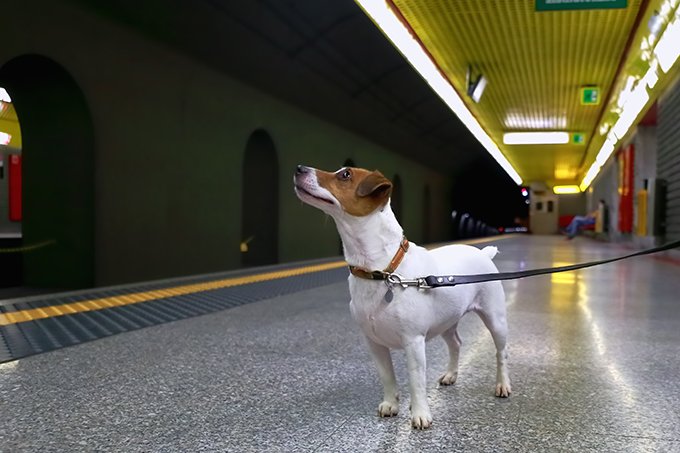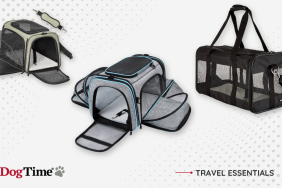Sometimes traveling with your dog is a necessity, and we do not always have access to a car of our own or a car service. Public transportation can be an option for you and your dog, but it is important to be prepared. Only some major metropolitan areas allow non-service animal dogs on their transportation systems, and each of them has their own set of rules as to what is needed.
What Major Cities Allow Dogs On Public Transportation?
(Picture Credit: Getty Images)Seattle, San Francisco, Denver, Chicago, New York, Boston, Atlanta, and Orlando are all major U.S. cities that allow dogs on buses, trains, or subways. Here are the rules for each of these major cities:
- Boston: Small dogs can ride the T Subway System as long as they are in a carrier. During non-peak hours, larger dogs on leashes can ride as well.
- Chicago: Dogs riding the Chicago Transit Authority (CTA) must be in a carrier and cannot take up their own seat.
- New York City: Small dogs can ride the MTA subway, bus, and commuter rail system in a bag or crate.
- San Francisco: The MUNI allows any type and size of dog to ride on its trolleys, rail cars, and cable cars when it is not peak-hours.
- Atlanta: Dogs in a crate or carrier that can fit on your lap are allowed on Atlanta’s Rapid Transit Authority.
- Orlando: Dogs are welcome on public transit if they are in a carrier that can fit on your lap.
- Denver: Small dogs in rigid carriers (not soft carriers, which have become popular) can ride buses and the light rail.
- Seattle: It’s up to the public transit’s driver to decide whether or not your pup is allowed. If the driver deems your dog unruly, smelly, or aggressive, they can refuse to let them aboard.
What About Smaller Towns?
Smaller communities’ public transit systems may also allow dogs to come on board. Check with your local public transit before assuming your dog can ride the bus or train. Here are some questions to ask your local transit authority:
- Are only service animals allowed? All forms of public transportation legally have to allow service dogs on their bus, train, subway, etc. Service dogs and therapy dogs are not the same thing. Therefore, having a recommendation from a therapist may not count for some transit systems.
- Does it cost me anything to bring my dog on board? Major transit systems do not require you to buy a ticket for your dog, but smaller transit companies might.
- Are there certain times my dog is allowed on public transit? Many transit systems may not allow pet dogs on board during peak rush hours. Make sure there are no time restrictions for when you want to use public transit with your pup.
- Are there size or breed restrictions? Some of the bigger transit communities will only allow dogs of a certain size on their transportation systems. Your transit system may not only have a size restriction, but a breed one as well. Make sure your pup is welcome on whatever transit service you intend on using.
Get Your Dog Ready For Public Transportation

If you checked all the rules of your public transit system, make sure your pup is ready for their ride on a crowded train, subway, tram, or bus.
- Make sure your dog is socialized. Bringing a dog onto a crowded bus if they aren’t used to strangers can be stressful. Create a healthy social life for your dog so a subway ride won’t be too jarring for them. Socialization isn’t only good for public transportation, but for your dog’s well-being, too.
- Bring paperwork and gear. Some transit authorities require your dog’s immunization records or other paperwork before they are allowed to ride. Some public transportation systems require short leashes, carriers or muzzles for dogs. Also, even if your dog is potty trained, bring emergency clean up wipes just in case.
- Be courteous with your dog. Don’t let your dog take up or block seats meant for humans. If the public transit you take is less crowded, opt for a seat further away from others who might suffer from allergies or fear dogs. On a crowded buses or trains, do your best to make sure both your dog and people around you are comfortable.
- Check if your dog gets motion sick before riding public transit. One thing worse than a carsick dog is a carsick dog on public transit. Make sure your dog can stomach bumpy rides.
The best thing to do before traveling with your dog is to prepare. Once you have all done research and made sure your pup doesn’t get motion sickness, using public transit with your dog can be an easier, more pleasant experience. Do you use public transportation with your dog? Have any tips for people who are about to try for the first time? Let us know in the comments below.









